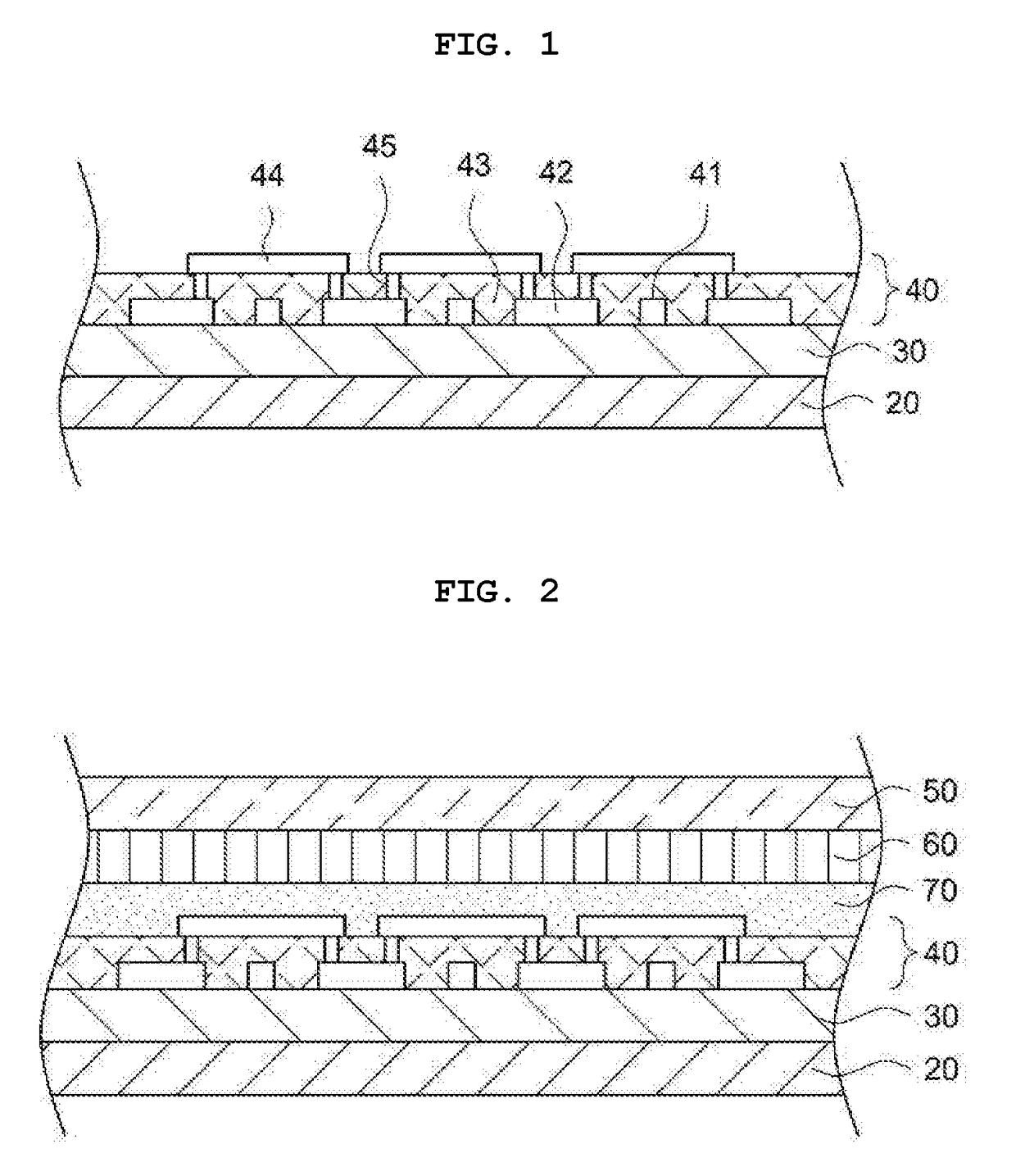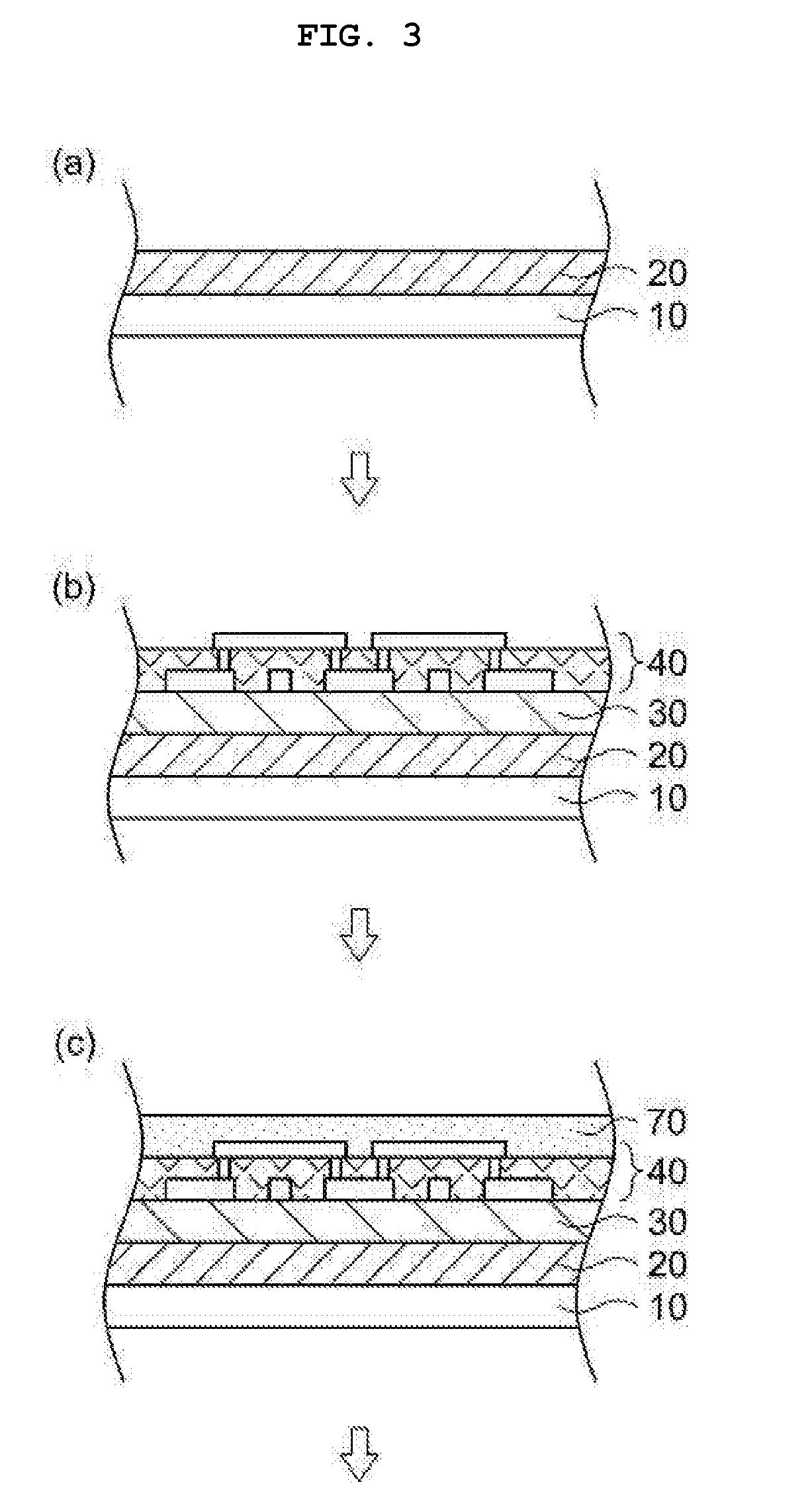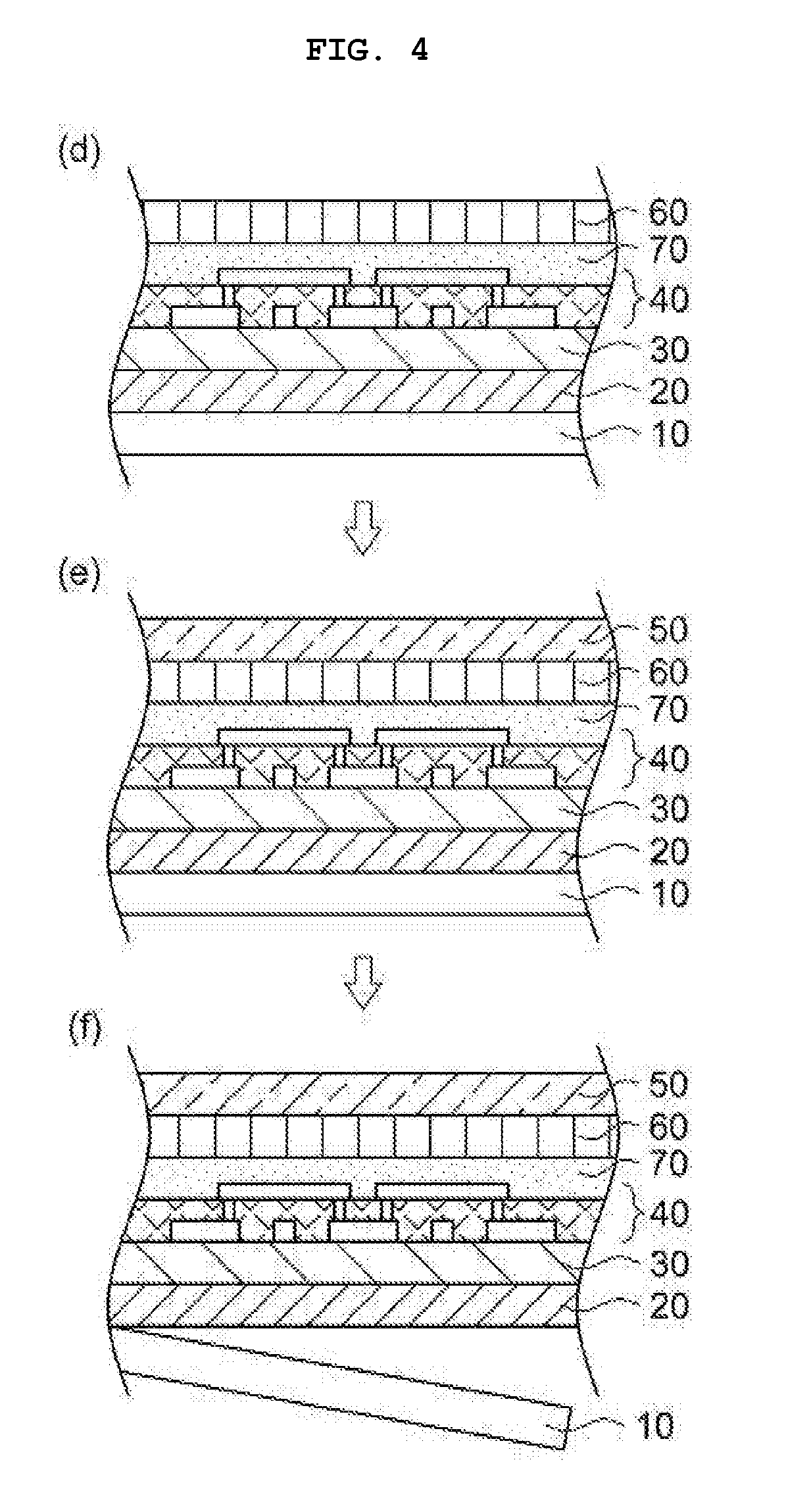Film touch sensor and method for fabricating the same
a technology of touch sensor and film, which is applied in the direction of metal layered products, synthetic resin layered products, electric digital data processing, etc., can solve the problems of difficult removal, damage to protective layer, insulation layer, or the like, and achieve excellent thermal resistance, suppress thermal damage such as wrinkles, cracks, and reduce resistan
- Summary
- Abstract
- Description
- Claims
- Application Information
AI Technical Summary
Benefits of technology
Problems solved by technology
Method used
Image
Examples
synthesis example 1
[0207]60 parts of 8-hydroxycarbonyl tetracyclododecene, 40 parts of N-phenyl-(5-norbornene-2,3-dicarboxy imide), 1.3 parts of 1-hexene, 0.05 parts of (1,3-dimethyl imidazolidin-2-ylidene) (tricyclohexyl phosphine) benzylidene ruthenium dichloride, and 400 parts of tetrahydrofuran were put into a nitrogen-substituted glass pressure reactor, and reacted at 70° C. for 2 hours while stirring to obtain a resin solution (a) (solid concentration: about 20%). The resin solution (a) was transferred into an autoclave equipped with a stirrer, and reacted at a hydrogen pressure of 4 MPa and a temperature of 150° C. for 5 hours to obtain a resin solution (b) containing a hydrogenated resin (hydrogenation rate: 99%). Then, 100 parts of the resin solution (b) and 1 part of activated charcoal powders were put into an autoclave made of a heat-resistant agent, and reacted at 150° C. under a hydrogen pressure of 4 MPa for 3 hours. After completion of the reaction, the reactant was filtered with a filt...
synthesis example 2
[0218]100 parts of 8-methyl-8-methoxycarbonyl tetracyclo[4.4.0.12,5.17,10]dodeca-3-ene, 1.3 parts of 1-hexene, 0.05 parts of 1,3-dimethyl imidazolidin-2-ylidene(tricyclohexyl phosphine)benzylidene ruthenium dichloride, and 400 parts of cyclohexene were put into a nitrogen-substituted glass pressure reactor. The mixture was subjected to polymerization reaction and hydrogenation reaction according to the same method as Synthesis Example 1 to obtain a resin (A). The resin (A) had an Mw of 5,300 and an Mn of 3,200. In addition, the hydrogenation rate was 99%. Next, 100 parts of the resin (A) obtained above, 100 parts of N-methyl pyrrolidone, 500 parts of propyleneglycol, and 84.5 parts of 85% potassium hydroxide were added to the reactor. The mixture was heated and stirred at 190° C. for 4.5 hours. The obtained reactant was poured into a mixed solution of a large amount of water, tetrahydrofuran and hydrochloric acid to coagulate the hydrolysate. The coagulated polymer was washed with w...
synthesis example 3
[0219]100 parts of 5-(2-hydroxyethoxycarbonyl) bicyclo[2.2.1]hepto-2-ene, 1.3 parts of 1-hexene, 0.05 parts of 1,3-dimethyl imidazolidin-2-ylidene(tricyclohexyl phosphine)benzylidene ruthenium dichloride, and 400 parts of tetrahydrofuran were put into a nitrogen-substituted glass pressure reactor. The mixture was subjected to polymerization reaction and hydrogenation reaction according to the same method as Synthesis Example 1 to obtain a resin (3). The resin (3) had an Mw of 5,500 and an Mn of 3,300. In addition, the hydrogenation rate was 99%.
PUM
| Property | Measurement | Unit |
|---|---|---|
| glass transition temperature | aaaaa | aaaaa |
| elastic modulus | aaaaa | aaaaa |
| transmittance | aaaaa | aaaaa |
Abstract
Description
Claims
Application Information
 Login to View More
Login to View More - R&D
- Intellectual Property
- Life Sciences
- Materials
- Tech Scout
- Unparalleled Data Quality
- Higher Quality Content
- 60% Fewer Hallucinations
Browse by: Latest US Patents, China's latest patents, Technical Efficacy Thesaurus, Application Domain, Technology Topic, Popular Technical Reports.
© 2025 PatSnap. All rights reserved.Legal|Privacy policy|Modern Slavery Act Transparency Statement|Sitemap|About US| Contact US: help@patsnap.com



